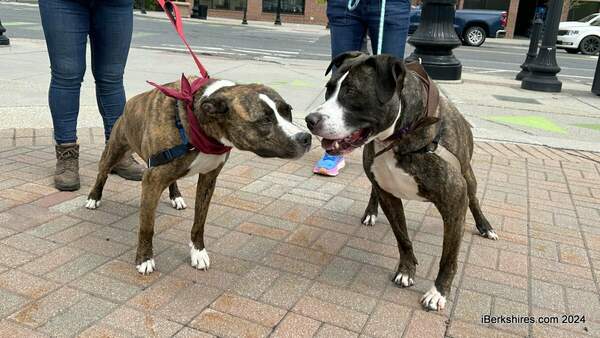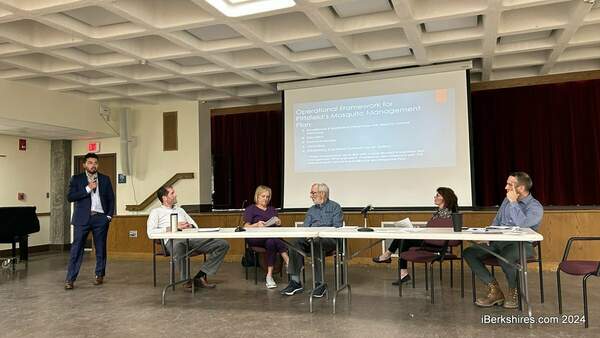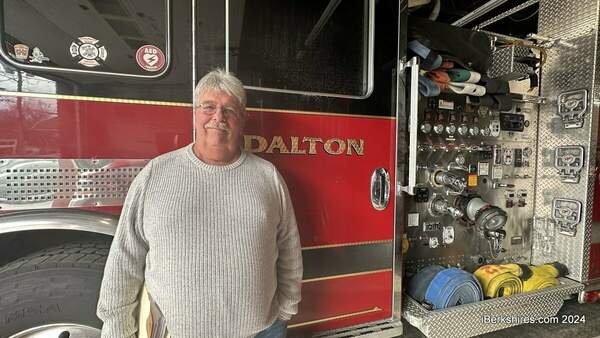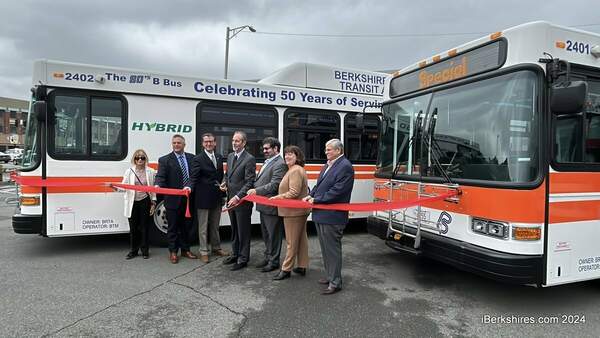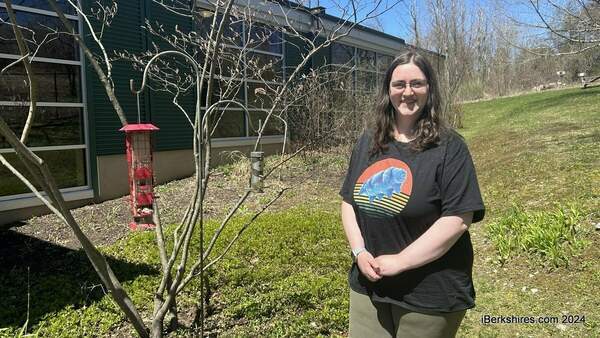Bridge Stress Project Wins Reid Science Fair
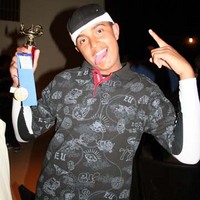 |
| A happy Paul Green won the fair overall for his 'Make It, Break It' bridge project.View Slide Show |
Green's fan favorite project, titled "Make It, Break It," tested what kind of bridge construction could hold the most weight. Constructing five kinds of bridges — truss, arch, suspension, beam and cable-stayed — from scratch, Green used dumbbell weights on each of his creations until it broke and then recorded the data.
"Eventually, I broke all the bridges, which was kind of disappointing because I spent so much time making them," said Paul, who researched bridge engineering online to figure out how to construct his wooden models.
In the end, it was the truss bridge that could hold the most weight (34 pounds), followed by the beam-style, which could support 31 pounds.
"I learned a lot about the importance of bridges. The more I researched, the more I learned about the role of bridges," said Paul.
At the second annual science fair (the event had been on a 14-year hiatus before resuming 2007), all seventh-grade students had the opportunity to showcase the projects that they had been working on for more than six months to their parents, friends and a seven-person judging panel. Evaluated in six categories (scientific approach, knowledge of project areas, thoroughness, written records and reports, ingenuity and creativity and visual presentation), the students' projects tested everything from memory and learning to types of household insulation.
"We encouraged them to find something that interested them and apply the scientific method to it," said David Penna-Ward, a Reid science teacher and event co-coordinator.
Projects concentrated on one of five areas: general science, life science, environmental science, physical science and chemistry.
<L2>For young musician Ruth LaRagione, the fair project was more than a classroom assignment: it was a challenge.
"I learned that this project was much harder to do than I thought," said Ruth, who tested which material would absorb sound the best in "Sound Waves — Going with the Flow."
Testing felt, cardboard, construction paper and foam in a box that emanated sound waves and a laptop that measured them, Ruth, a pianist, conducted 40 trials to determine amplitude.
"I proved my hypothesis correct and incorrect," said Ruth, who won first prize in the general science category. "I thought the foam would absorb the most sound but it only absorbed one tone better than the others."
Jacob Carlson and Timothy Schmidt said the inspiration for their project — "Inflation Station" — came easy.
"We were sitting in class and we saw a balloon float by," said Jake. "So we decided to do something with balloons because they're fun."
The duo inflated five balloons to 20 inches at their widest circumference on March 7 and left them in the same conditions. Every day, they'd inspect the filled balloons at the same time to determine "if the contents matter how long they stayed inflated."
Jake and Timmy used helium, nitrogen, oxygen, carbon dioxide and ambient air (from a bike pump) to fill the balloons.
"We discovered that the nitrogen balloon expanded," said Jake, who explained that large molecules in nitrogen could not escape through the tiny pores of the balloon as helium does.
"I didn't know much about different types of gases before we did this," said Timmy. "It's giving me a lot of ideas."<R3>
The pair's experiment garnered them first prize in the chemistry category.
New to the fair this year was the environmental category, in which the projects focused on the human impact on the surrounding environment.
Cara Partridge was one of several students who created her own windmill and tested how blade construction affects power generation. Inspired by Jiminy Peak's wind turbine Zephyr, Cara constructed a windmill with three different blade lengths to see which one - 5-inch, 7-inch or 9-inch - would produce more electricity.
"I think it's important to talk about global warming and to think about using wind power. I think if we got more wind turbines, it would be good for us," she said.
Though she didn't win any prizes, Cara said she was happy to be in good company.
"Everyone worked really hard on their projects," she said.
The judges named three winners in each of the five science categories, with one overall winner.
"Win or lose, one of the things I think students should take away from this fair is a big sense of pride," said science teacher Mary Yarmosky. "They've worked really hard and their parents are here to see them and it's great for them to share this with each other. Whether they took a survey or built a bridge, the students deserve to be proud."
Reid Middle School Science Fair Winners:
General Science:
1. Ruth LaRagione - Which material absorbs sound better?
2. Shaun Pero - Are permanent markers really permanent?
3. Connor Ryan - Which boat material hosts the most weight?
Environmental Science:
1. Alisha Malkani and Kristina Walser - Does environmentally-safe vinegar clean equally well as the leading No. 1 cleaner?
2. Shane Johnson - Which insulation works better - blown or fiberglas?
3. Jacob Rosler and Colin Russell - What insulation works the best for cold climates?
Life Science:
1. Jake Stockley - What affect does salt water have on an object's ability to float?
2. Julia Read and Tanisha Adams - Does music affect my dog's ears?
3. Monica Vogel - Does lung capacity vary between female athletes and nonathletes?
Chemistry:
1. Jacob Carlson and Timothy Schmidt - Does the content of an inflated balloon affect the length of time it stays inflated?
2. Kareem Tyler and Ashley Scully - What color absorbs the most heat?
3. Alex Amuso and Brian Bonaquist - Do mint Mentos make the diet soda shoot higher?
Physical Sciences:
1. Ashley McLaughlin - Does weight affect speed of hamsters?
2. Michael Hart - Can wood lower your heating bill?
3. Craig Spencer-Hopkins and Adam Storie - What brand of sponge will absorb more water?
Science Fair Winner:
Paul Green - Which bridge construction is the strongest?

